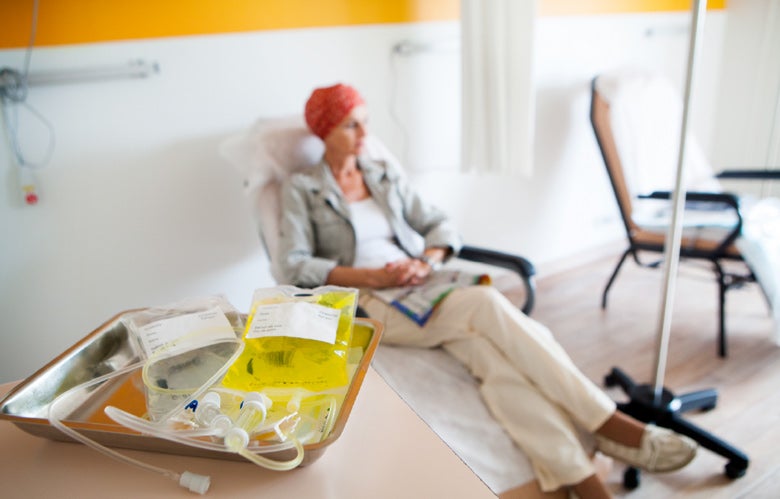Urgency is the name of the game in the emergency department, intensive care unit, or urgent care clinic. Providers must be prepared to see any and every condition and comorbidity at any time. Remembering protocols for each situation is impossible, but the need is no less urgent. This is especially important for COVID-19 because those most likely to present to an emergency department are the elderly and those with preexisting conditions, adding another level of complexity to management. There is little time to comb through information looking for each potential protocol. In such cases, some turn to Google to find the information they need — not an ideal solution, especially in full battle garb fighting to save lives during a pandemic.
While clinical decision support systems (CDSS) can help relieve this burden, their effectiveness varies greatly from one solution to the next. But those in the trenches need a solution that stands up to the challenges of the silent enemy in this pandemic.
Five criteria providers should consider when choosing a CDSS:
1. Don’t rely on an encyclopedic-based solution.
Up until the last decade, treatment protocols were accumulated reactively, causing them to be outdated by the time they were published if not shortly thereafter. While newer solutions are better, they still have problems. Much of the information is not thoroughly vetted, and many times the publisher has a vested interest in the research. It wasn’t long ago Oxycontin manufacturers pushed it as an alternative to traditional pain killers, touting that the drug was less likely to cause addiction. Many healthcare organizations jumped on board contributing to the opioid crisis.
To be truly effective, treatment pathways must be based on the most thorough, accurate, current information. The system needs to be continuously learning, adjusting and expanding the knowledge base to include new insights, such as comorbidities and medication efficacy, which is so essential.
2. Information should be continually updated.
Treatment decisions are only as good as the information they’re based on. But for conditions such as COVID-19, that information is evolving every day. There is still ambiguity around the use of hydroxychloroquine and chloroquine, which were initially considered potential treatments but are now considered ineffective. Researchers and laboratories are working around the clock and around the world to create both effective treatment options and a vaccine. New information is available every day as these initiatives progress. Those in the trenches fighting this pandemic always need the most current information available. An effective solution is one that is updated with new information gleaned from multiple industry leaders.
3. Ensure the solution fits into, and enhances, workflows.
Regardless of specialty or facility type, all providers are dealing with increased administrative burdens, leaving less time to allocate to patient care. Physician practices are especially impacted; research shows that the typical physician spends more than half their day working in the EHR, leaving as little as 20 percent of their day to spend with patients. Whether in a hospital, physician practice, or urgent care clinic, providers simply do not have time to waste chasing information, especially in the emergency department where time can mean life or death. Providers need a solution that does not require them to leave one system and log into another to enter information. The best solutions are those that drive a better clinical workflow by streamlining documentation and order entry.
4. The solution should be available to all clinicians at the bedside, wherever that bedside may be.
The vast demand for urgent care during this pandemic has surpassed our availability of beds. Across the country, health systems are setting up alternative care sites to address this need. Caregivers in these situations don’t often have the convenient access to information that they would in a traditional emergency department or intensive care unit. This barrier can be addressed by providing them a decision support solution that is available from any digital device from any location. The interface should be simple to navigate so that information is easy to find, which allows for faster decision making and execution, which is critical to those on the front lines.
5. Think beyond the one-size-fits-all approach.
We can simply watch the evening news to see how this pandemic is affecting caregivers. They are stretched thin, working long hours, sleeping in their cars, garages or hotels to protect their families. A single caregiver may be caring for multiple patients at all stages of the virus at the same time, each with their own unique medical conditions. Those caregivers need the ability to quickly stratify risk and identify the appropriate care pathway for every patient. There is no one-size-fits-all COVID-19 treatment pathway. The best solution is one that quickly guides the caregiver to the right care pathway for each patient.
Putting it all together.
The practice of medicine is continually evolving, not just in our knowledge of treatment efficacy but also in the creation of new technologies that help improve efficiencies and outcomes. Institutions aren’t always quick to adopt those innovations. Situations like the current pandemic have drawn attention to some of the shortfalls of our current system, such as a poor procurement process, outdated, inadequate stockpiles of equipment, and an inability to transition to telehealth when necessary. While there are workarounds to getting PPE and other necessities to the locations that need them, there is no workaround for patient care. Patients expect their providers to make the right decision based on their needs. The only way to do that is with evidence-based care pathways specific to COVID-19 that are updated regularly and available at a moment’s notice from any location.
That solution exists today and is available to all healthcare providers at no charge. EvidenceCare, a leading provider of clinical decision support solutions, works with industry leaders and content experts like EBSCO’s DynaMed®, the American College of Emergency Physicians, Elsevier, and others to curate the most current clinical pathways for triage and treatment of COVID-19. New information is collected, digitized, and made available through interactive pathways. Caregivers can access the information in as little as 30 seconds from any desktop or digital device from any location.
Information about the pathways is available for all healthcare professionals at evidence.care/covid-19, and direct access to the pathways is available at covid19.evidence.care.



